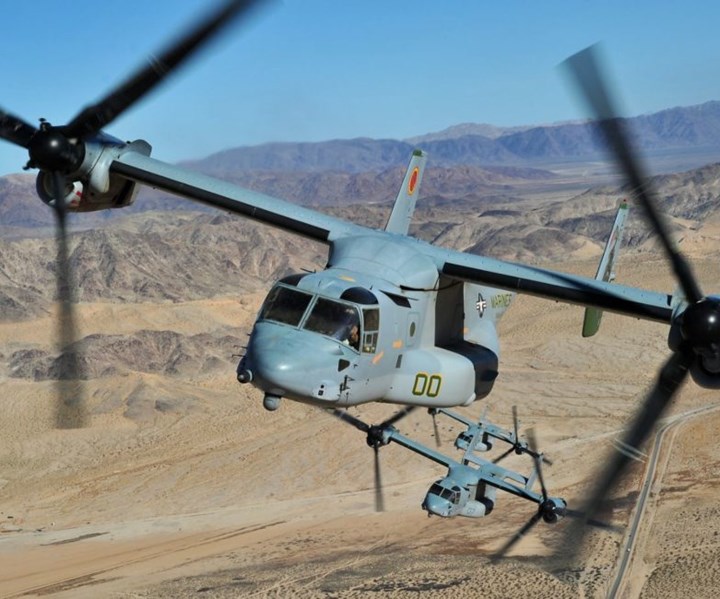Meggitt to supply composite ice protection components for V-22 Osprey
Per a contract with Bell Textron Inc., Meggitt will supply composite de-icing propeller rotor blankets, heated spinners, fairings and pendulums.

Source | Meggitt
Meggitt PLC (Dorset, U.K.), a leading international company specializing in high-performance components and subsystems for the aerospace, defense and selected energy markets, has signed a contract with Bell Textron Inc. (Fort Worth, Tex., U.S.) worth an estimated $73 million to supply composite de-icing propeller rotor blankets, heated spinners, fairings and pendulums to the Bell Boeing V-22 Osprey. The contract is valid for five years.
The V-22 Osprey is a military aircraft platform designed to combine the functionality of a conventional helicopter with the long-range, high-speed cruise performance of a turboprop aircraft. Meggitt’s electro-thermal ice protection components are constructed from composite materials with embedded thermal technology.
Tony Wood, Chief Executive, Meggitt said, “The Osprey is an iconic platform and we are grateful for the trust that Bell has once again placed in Meggitt to provide composite solutions that greatly enhance flight safety, efficiency and performance.”
Meggitt is also a member of the Clean Sky 2 Green Airframe Icing Novel Systems (GAINS) consortium, part of the Airframe ITD (Integrated Technology Demonstrator). GAINS will deliver a complete ice protection solution for business aircraft, including smart hybrid bleed-air and electro-thermal systems for de-ice and anti-ice as well as the novel ultra-low power de-ice system. Work area leaders are Dassault Aviation and Airbus Spain. Exploration includes alternatives for heavy electro-mechanical actuators in explusive systems, which apply impulses to aircraft structures, causing the ice to break away. Research is also being conducted into passive ice protection using advanced ice-phobic surface materials to inhibit ice accretion and promote ice shedding. GAINS started in July 2015 and continues until 2022, with the objective of demonstrating a flightworthy advanced hybrid system and a laboratory demonstration of the novel low-power alternative.
Related Content
-
Plant tour: Collins Aerospace, Riverside, Calif., U.S. and Almere, Netherlands
Composite Tier 1’s long history, acquisition of stamped parts pioneer Dutch Thermoplastic Components, advances roadmap for growth in thermoplastic composite parts.
-
Otto Aviation launches Phantom 3500 business jet with all-composite airframe from Leonardo
Promising 60% less fuel burn and 90% less emissions using SAF, the super-laminar flow design with windowless fuselage will be built using RTM in Florida facility with certification slated for 2030.
-
Ceramic matrix composites: Faster, cheaper, higher temperature
New players proliferate, increasing CMC materials and manufacturing capacity, novel processes and automation to meet demand for higher part volumes and performance.
















